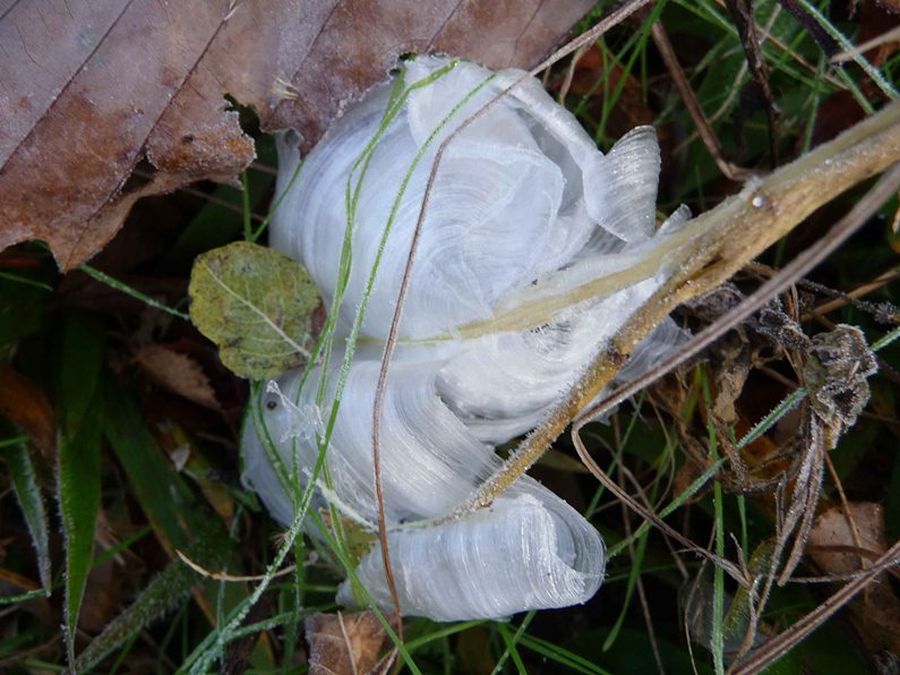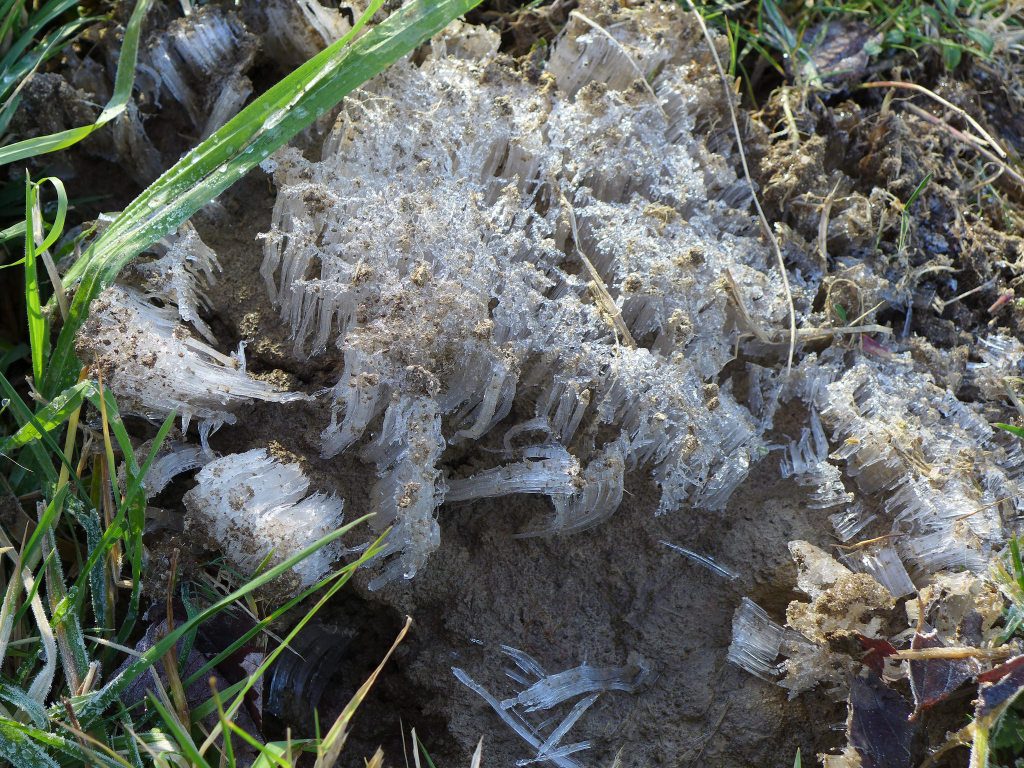
30 December 2021
We’re having such a warm December that it may be mid January before we see ice again. When we do we are likely to see needle ice but it is too late for frost flowers.
Frost flowers, shown above, are beautiful, thin, curled ice confections that form in the presence of soggy unfrozen soil, freezing air, and dried plant stems that haven’t frozen yet. This week we have soggy soil and will eventually get freezing temperatures but all the plants have frozen at least once. The National Weather Service in Louisville, KY explains (paraphrased):
“Frost flowers are thin layers, perhaps credit card thickness, of ice that are extruded through slits from the stems of white or yellow wingstem plants, among others. … Practically speaking [this is] a once per year event, although not all individuals produce frost flowers on the first day of good conditions. The water in the plant’s stem is drawn upward by capillary action, expands as it freezes, splits the stem vertically, and freezes on contact with the air.”
Click here for more photos of frost flowers.
Needle ice is much more common in western Pennsylvania because it bursts up from saturated soil into freezing air. It too is caused by capillary action but it is more hardy than frost flowers.

We’ll likely have needle ice some time in January. This vintage article tells you where to look.
(photos by Glen Conner, State Climatologist Emeritus for Kentucky and Kate St. John; click on the caption to see the original)